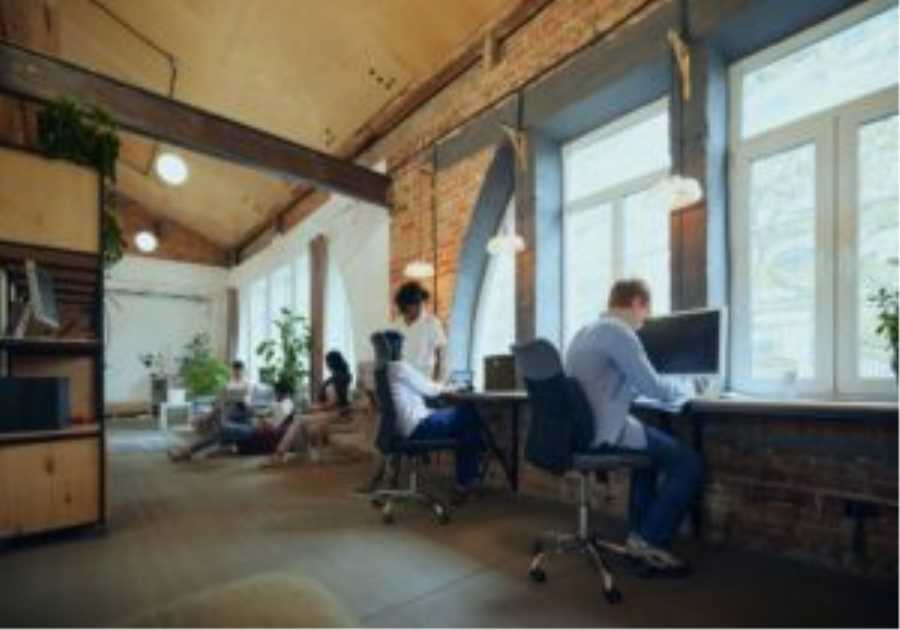Meta
- I was invited to try Meta's $1,500 virtual reality headset at its Kings Cross office in London.
- I used the device to attend a meeting in Horizon Workrooms — Meta's collaborative work tool in VR.
- I was amazed by the tech, but I wouldn't want to use it at work regularly.
When I was invited to try out Meta's latest virtual reality headset in Horizon Workrooms — a virtual office in its metaverse — I jumped at the opportunity.
I had written about the metaverse before and its use in the workplace and I was pretty sceptical. It seemed far-fetched to put on a vision-obscuring device just to meet my colleagues in VR, and even more complicated for those with children or pets at home.
But Meta had launched the Meta Quest Pro in October — priced at an eye-watering $1,500 — and boasting features like pass-through and spatial audio.
The device gives users access to Horizon Worlds, a social universe in Meta's metaverse. Workrooms is one tool in that universe, which can be used to hold meetings in VR.
"Virtual worlds have the potential to recapture that same sense of togetherness that many of us feel are missing," from remote work, Steve Hatch, Meta's VP for Northern Europe, said at an event Insider attended at Meta's Kings Cross office in London.
I wasn't convinced that being in a virtual world with an avatar-like rendering of my colleagues would help me feel closer to them, but Meta's product marketing manager for Oculus, Yuxi Wang, told Insider that the device "surprisingly feels like you're actually right in the same room together."
Wang said Meta wants workers to "enjoy more real estate," when working from home so they have greater options for productivity.
It was hardly surprising that Meta's own staff would say they enjoyed the company's product, so I was curious to try out the device myself for the first time.
The tech was undeniably very cool

Meta
I popped on the lightweight and sleek-looking device and was transported into a large office with windows overlooking mountains and the sea. I was stunned by how vivid and realistic everything looked.
Looking around at other people's avatars, I was impressed with the diversity of features and clothing options. There was an avatar with a patka, one with a pagri, and another with a bindi. They looked incredibly lifelike with some raising their eyebrows and others laughing — I soon realized that my avatar's facial expressions mirrored my own.
The instructor in the meeting changed the location of the office a few times, first to a futuristic city with skyscrapers, and then to a beach — a perk definitely not available in real-life. The layout of the desk was also adjustable and people could be divided into breakout rooms, making collaboration easier.

Meta
There were a range of work-specific features like monitors that were blurred to anyone else looking — handy if you're working with sensitive or confidential information. People could also join via video call and we could see them through a monitor.
The pass-through option enabled me to see the real world with virtual monitors overlaid.
When turned on, I could see my real desk in front of me and my phone on top of it. Wang said this would give people the ability to see their kids or pets or make a coffee without having to take the device off.
Another striking feature was spatial audio and teleportation. By pointing my hands towards a particular seat and clicking on it, I could transport my avatar into that seat and the volume and direction of a person's voice would change according to the seat I was in.
I don't see myself using it at work regularly
I and other journalists at the event were thoroughly impressed by the tech, its various work-specific features, and the remarkable fluidity of movement the avatars had, but I don't see myself using it at work on a regular basis.
Meta had emphasized the feeling of "togetherness" and connection you feel in VR, but it felt like the opposite. Looking at people's avatars instead of their real faces felt inauthentic and further honed in on the fact that I'm not really there with them.
Adi Gaskell, a freelance journalist agreed, saying: "It only seems to be used at the moment as a form of doing meetings, so I wonder is an avatar making facial expressions better than seeing someone either in person or via Zoom et al?"
I also started to feel the pressure of the device on my head after 10 minutes and although it was adjustable, I was relieved to take it off after around 20 minutes.
Gaskell pointed out that VR "doesn't address" some of the primary concerns about remote work including proximity bias and networking.
He said: "Your avatar is largely tethered to a desk so you don't have the informal 'water cooler' moments you get at work, and it doesn't even seem to be geared towards working full-time 'alongside' your colleagues either."
"It doesn't really change the disconnect between on-site and remote workers as they still only come together for meetings," he added.
Hatch said that one of Meta's predictions for the future of work is that companies will start investing in VR tech over laptop upgrades, but with the expensive price tag and a global recession on the horizon, I have my doubts.
Read More
By: [email protected] (Sawdah Bhaimiya)
Title: I tried out Meta's $1,500 virtual reality headset to attend a meeting in the metaverse. The tech was undeniably cool, but after 20 minutes I was relieved to take it off.
Sourced From: www.businessinsider.com/i-used-metas-virtual-reality-headset-in-office-in-metaverse-2022-12
Published Date: Wed, 28 Dec 2022 10:06:00 +0000
.png)





